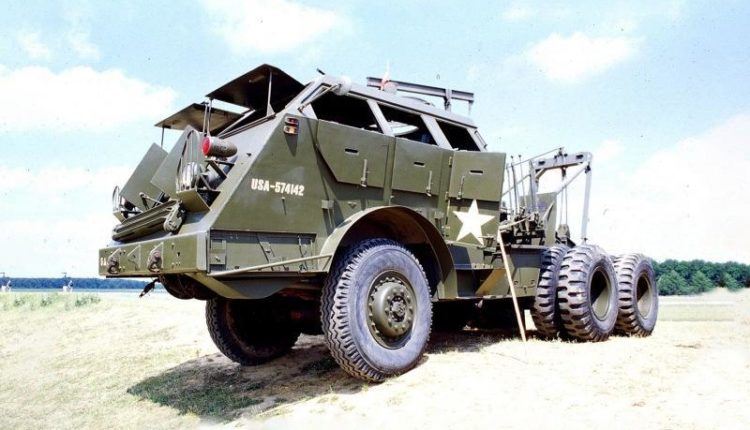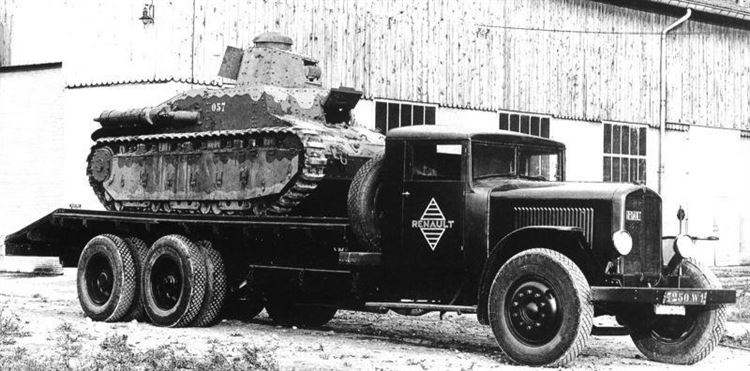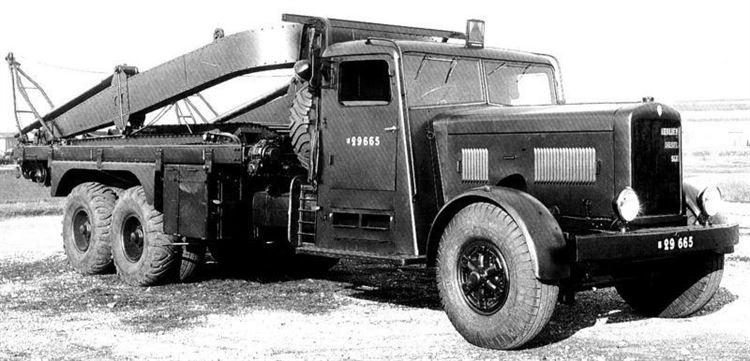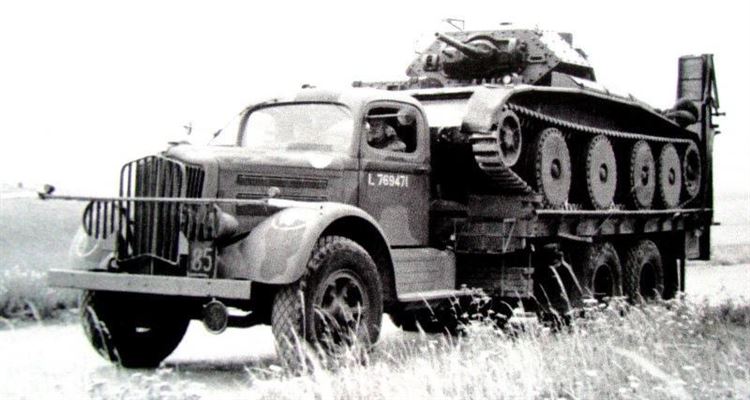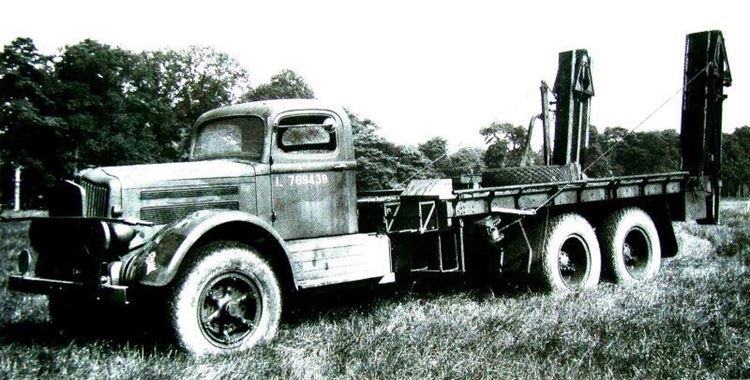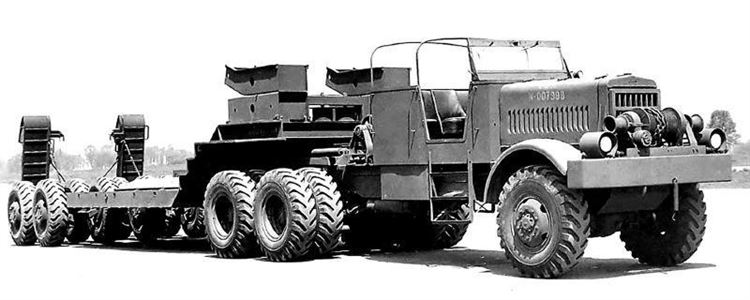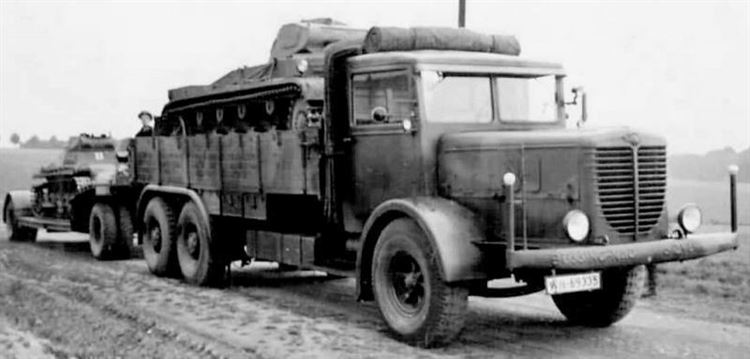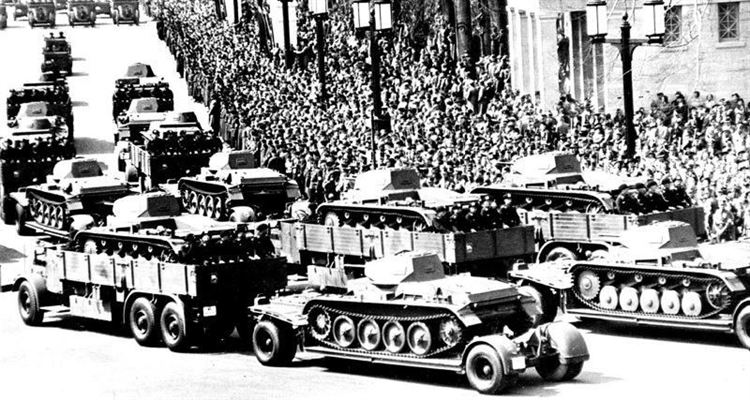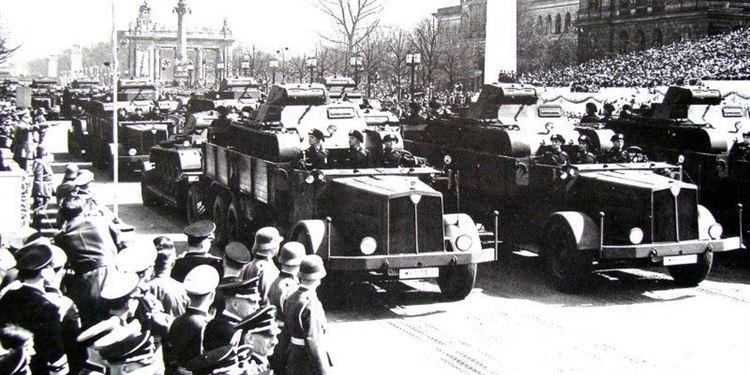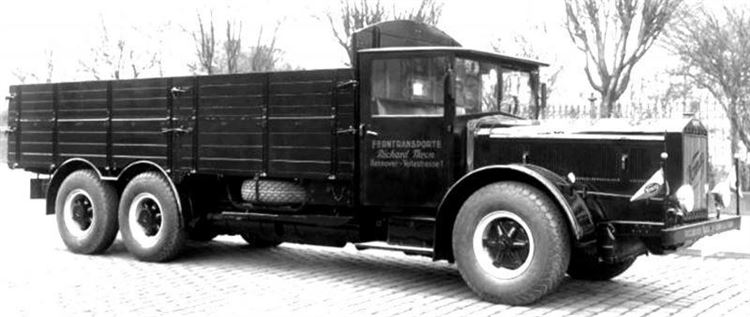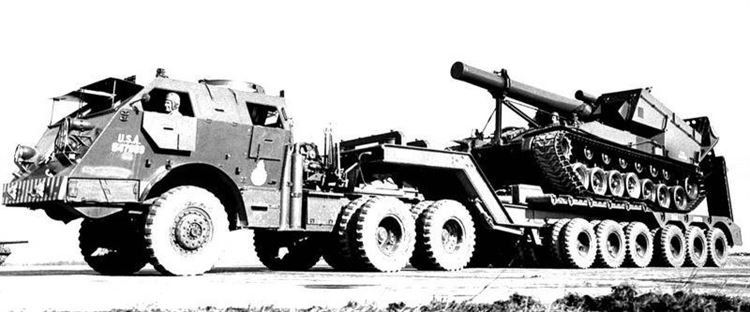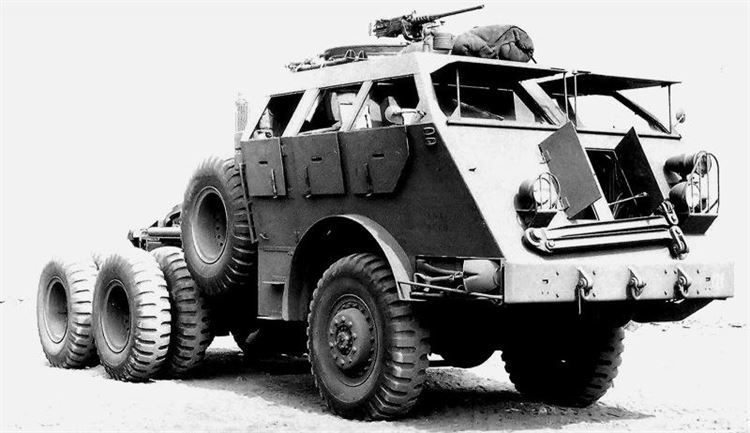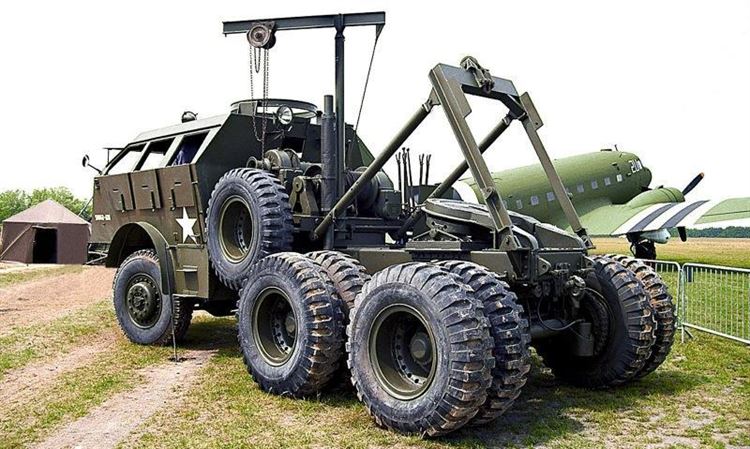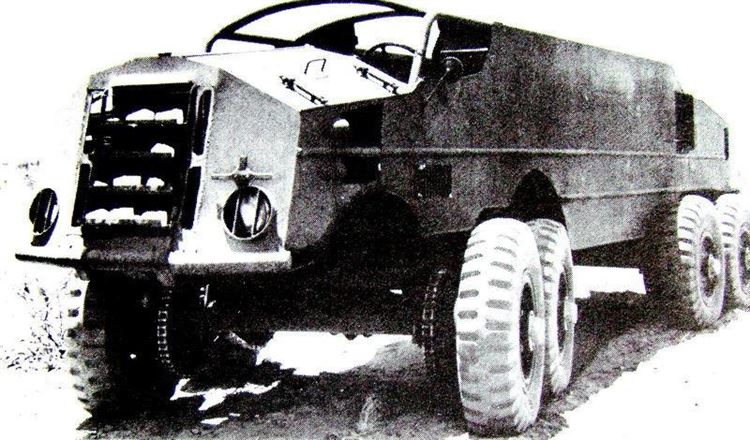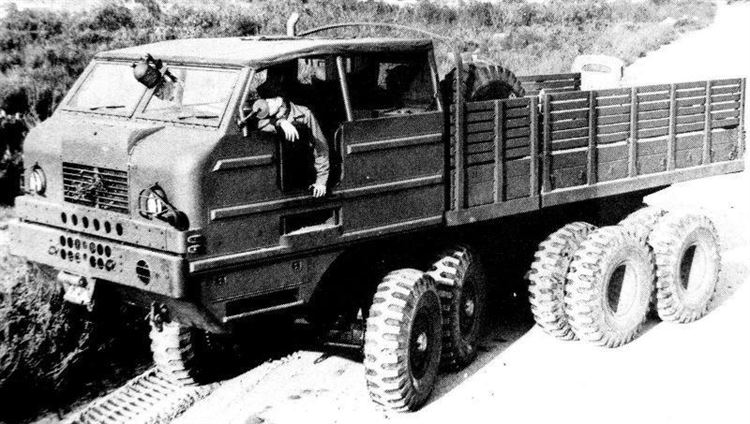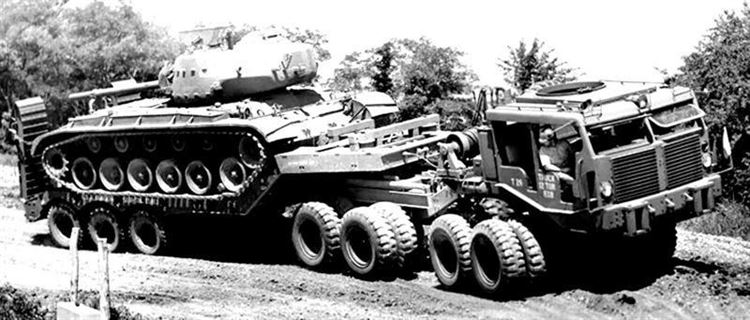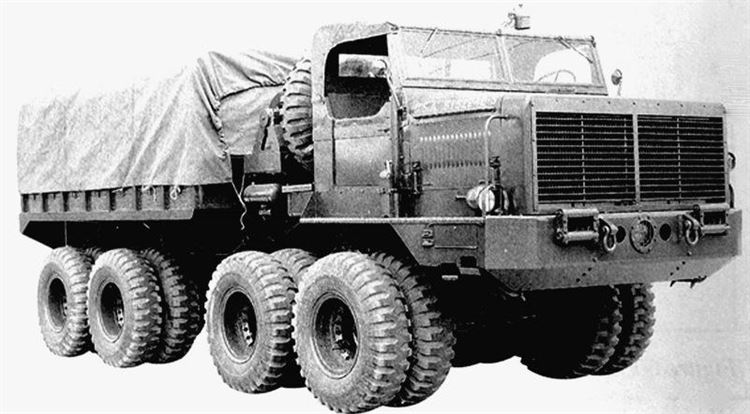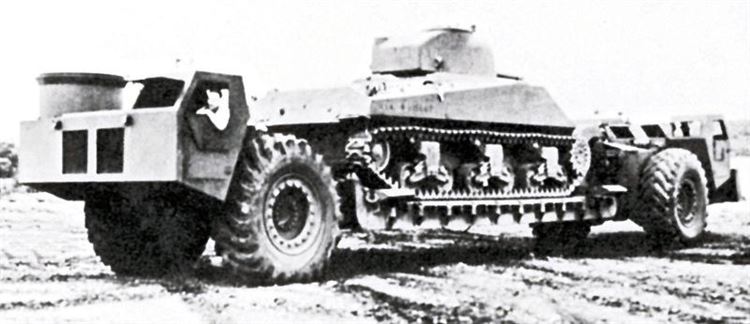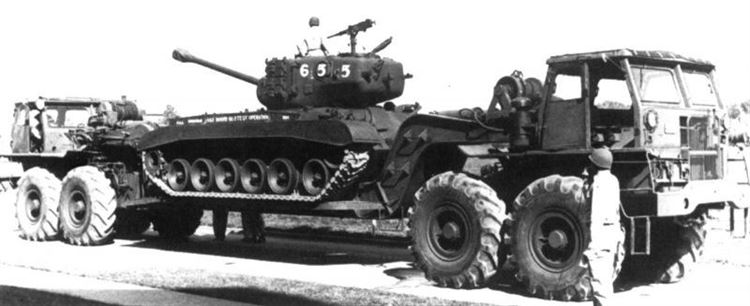Tank carriers: giant vehicles of World War II for the rapid delivery of heavy armored vehicles
Already on the eve of the First World War, the first small armored tracked vehicles began to appear among the warring parties, which they tried to transport on horse-drawn carriages, trailers and in the bodies of still “rough" military vehicles. Gradually, special tanks began to appear.
What are tankers
In the late 1930s, as the military became increasingly aware of the important role of tanks in combat, major automobile companies in Western countries began testing a new piece of military equipment: tanks. These were modified serial trucks with a simple and rational lifting and unloading system instead of a body, which was used for accelerated reloading of light and medium self-propelled armored personnel carriers. During the war years, specially designed tankers and multi-wheeled tank tractors were added to tankers.
France
In the 1930s, France was considered a pioneer in the development and production of the first single examples of tank trucks with a smooth floor and various simple connections for the rapid transport of light tanks on public roads.
Heavy truck Renault VT6 (6×2) with a capacity of 100 hp on a 12-ton chassis with an onboard platform for transporting D1 tanks. 1932
Perfect gas tank Berliet GPE-2 (6×4) with a capacity of 115 hp with an arc charge system and a cable drive from a winch. 1935
The special transporter Berliet GPE-3 with a 135-horsepower diesel engine had an operating weight of 37 tons and developed a speed of 44 km / h on the highway. 1937
The hopes of the Burley company for large government orders for trucks and armored vehicles did not materialize: in September 1939 it was confiscated to organize the production of bullets.
New Willème DW-12A (6×2) 110 horsepower tanker with docking station and manual transmission for transporting D2 tanks. 1937
USA
Since 1940, in America, at the head of the White, Mack, Diamond T and other heavy mass-produced commercial vehicles, there have been a large number of single batches of simplified three-axle tanks with open loading platforms and two rear folding ramps assembled, which were sent to the places of operation and overhaul.
Modified 10-ton commercial truck (6×4) White-760 with a 15-ton winch for transporting British Cruiser Mk-IV light tanks
Initially, one of the most famous American military vehicles of the Lend-Lease era was considered to be a special 134-seat White-920 (6×4) chassis with tanks with a capacity of 18 thousand liters of gasoline, but after the German occupation of France, they began to be delivered to England, where they were converted into tank trucks for transportation light and medium armored vehicles. In total, up to 300 such machines were built.
Universal tank "White-920" (6×4) with a flat loading platform, folding ramps and a winch. 1939-1940
An important exception was the experimental work of a small company, Dart Truck, which assembled a Dart T13 (6×6) open-type truck transporter to deliver M3 medium tanks on 40-tonne M15 low-bed semi-trailers. It was equipped with a 250 horsepower engine, a three-speed gearbox, a bumper-mounted chain winch for self-recovery, and special reloading equipment.
In Kansas City, a tractor-trailer combination of a 10-ton tractor and a Dart T13 semi-trailer with a total length of about 20 meters is being tested. 1942
The T13 tractor received a cab with soft seats and a control unit, headlights in cylindrical housings and four pairs of single wheels
Germany
In 1937-1939, Büssing-NAG, FAUN-Werke and VOMAG (6×4) began assembling similar heavy diesel flatbed transporters in the nine-ton category with open or closed cabs and single-sided wheels. Once they were the largest and most powerful vehicles of the Wehrmacht, serving to transport light tanks on a loading platform, as well as towing heavy guns and tank trailers.
The Büssing-NAG 900 trucks were equipped with 130 hp inline six-cylinder diesel engines, a four-speed range-shifting transmission, a powerful chassis and suspension, air brakes, and 22-inch wheels. The speed of the cars reached 58 km / h.
Testing of a Büssing-NAG 900 heavy truck with a closed cab, two-axle trailer and a body made of wood and reinforced metal. 1938
At the parade, Büssing-NAG 900 vehicles in bodies and on trailers demonstrate 30-mm light tanks of the Sd.Kfz category. June 21, 1939
The FAUN L900 D567 vehicles used almost the same displacement Deutz engines with increased power to 150 hp, a 25 mm longer wheelbase and a longer track. Fully loaded, they moved along the highway at a speed of 50 km / h. In total, 80 cars of both types were assembled.
FAUN L900 D567 9.5 t heavy flatbed tankers with low bed trailers at the military parade in Berlin. 1937
Diesel-electric truck crane LK5 on a special 170-mm FAUN chassis for towing damaged armored vehicles. 1940
Rebuilt in 1997, the FAUN L900 D567 serial truck, according to its owner, developed 180 forces and carried 13 tons of cargo
At the same time, VOMAG (FOMAG) assembled 9-ton universal trucks on order. At the end of the 1930s, two types of paramilitary vehicles 8LR654 and 8LR655 were offered with a capacity of 150 and 160 hp at the same time, which during the war served in parts for the delivery of ammunition, personnel and light tanks. When the plant was closed, anti-aircraft transport systems of 88 mm caliber were installed in the bodies.
VOMAG 8LR654 150 hp single sided long wheelbase truck with 14.3 liter diesel engine and wooden body. 1938
United States
Simultaneously with the release of simplified tanks in the United States during World War II, for the first time in the world, fundamentally new conveyors of non-standard design were tested, including eight-wheeled tractors and unique motor "fronts", including a platform for the delivery of heavy armored vehicles was suspended.
Pacific 26 / М26А1 (1943-1945)
During the war, a company with the luxurious name of Pacific Car and Foundry Company and the unofficial name of Dragon Wagon became the only manufacturer of the largest heavy multi-axle tank tractors capable of performing the functions of a war zone.
Pacific M26 tank tractor as part of a road train weighing 93 tons and 19 meters long with a 240-mm T92 self-propelled howitzer on a trailer. 1945
In March 1943, the Pacific Company began production of the 12-ton M26 (6×6) armored tractor. Its main exterior feature was a seven-seat front and front extended cab with a hatch for an anti-aircraft machine gun, sloping steel armor plates and folding armor shields on all eight sides, front window openings and behind the front panel facing the radiator.
M26 semi-trailer with multi-seat armored cab, gun turret on the roof and rear side chain drives
The tractor used a 240 hp Hall-Scott in-line six-cylinder gasoline engine mounted in a shroud at the center front of the cab. The block with it housed a four-speed manual transmission with a three-speed gearbox, which provided for 12 steps forward. The rear chassis was mounted on a balanced spring-lever suspension, and torque was supplied to the drive wheels through side chain drives. The car was equipped with a classic front leaf spring suspension, pneumatic brakes on the rear wheels and two winches mounted behind the cab with a pulling force of 20 tons.
Option for repairing an aircraft on the M26 chassis with a lifting U-shaped beam, a mechanical crane and welding equipment (author’s photo)
Since May 1944, the company has been assembling a light unarmored M26A1 tractor with a distinctive aerodynamic soft-top open cockpit. The M26A2 variant was distinguished by the presence of 24-volt electrical equipment. When transporting Sherman medium tanks, two-axle low-bed semi-trailers M15 or M15A1 with a carrying capacity of 40-45 tons were used, reaching speeds of up to 45 km / h on the highway.
Two-ton lighter M26A1 tractor with an M4A3 Sherman medium tank on a semi-trailer with an open cab and turret. 1944
By early 1945, Pacific had built 1,272 tractors of all types, including 752 M26 models and 520 M26A1/A2 series machines.
Cook T1 / T20 (1942-1945)
In June 1942, the design bureau of the Cook brothers presented for testing a self-propelled model of a heavy armored personnel carrier with two 260-horsepower V8 engines. Its drivetrain was based on an original concept with individual chain drives for each wheel, with the two front axles combined into a steerable bogie mounted under the cab on a turntable.
The armored vehicle with the index T1 (8 × 8) passed the test cycle in the Mojave Desert and, thus, was subsequently known as the "Armored Vehicle of the Cook Desert". Interestingly, the original sources of cold – dry ice bags – served to cool a number of its units.
After the bankruptcy, the military was ordered to stop all work on the T1 model, given the particular complexity, huge size and cost.
After a couple of years, modest experience allowed us to start developing two eight-ton tankers T20 (8 × 8) with side ballast and trucks for towing trailers and semi-trailers with engineering equipment and tanks. They were powered by a 240 horsepower gasoline engine located at the rear of an elongated three-seat cab, beneath which were driver-controlled swivel bogies. The tractors were equipped with a four-speed gearbox, two main gears and two winches with a total traction force of 27 tf.
Heavy ballast tractor Kuk T20 with all-metal cab, all-wheel drive and front steerable bogie. 1944
The overly complex and heavy design of the front drive proved to be more practical and economical, making it possible to do without expensive and unreliable equal angular velocity joints, which at that time could not transmit high torque.
T26 lb (1945)
Shortly before the end of the war, Sterling Truck received an order from the US Army to create a series of promising box-type tractors and more powerful 20-ton T26 (8 × 8) tank tractors modeled on the work of the Cook brothers. In general, the design with a unique transmission was preserved, and heavy vehicles with eight twin wheels appeared on some models.
Heavy military tractor Sterling T26 with swivel front chassis and chain drive to all wheels. 1945
In the winter of 1945, the army’s first T26 low-bed tractor appeared, with a 275 hp V12 petrol engine, a five-speed main gearbox and a two-speed transfer case providing 20 forward gears. Instead of doors, the car was equipped with a five-seater cabin and a wooden-metal cargo platform for transporting ballast and crew.
In the spring, all-wheel drive semi-trailers with a gable roof, a double cab and a winch were built for testing, in combination with special heavy semi-trailers for transporting M4 medium tanks with a 90 mm gun.
During the tests, the Sterling M26 tractor with a special three-axle low-bed semi-trailer T58E1 with ramps weighed more than 80 tons
In the summer, the company built the most powerful multi-purpose road train T26E1 with a 525 hp V8 gasoline engine, rear fifth wheel ballast, all twin wheels and two drum winches with a total pulling force of 27 tf. Vans, tow trucks and new transmission elements were installed on this chassis. From January to May 1945, eight army vehicles were built.
The most powerful Sterling T26E1 military multi-purpose truck with a new four-speed gearbox or torque converter
The Tourneau T4 (1944-1945 гг.)
In pre-war times, LeTourneau was famous for individual examples of large SUVs created by engineer Robert Gilmour LeTourneau. At the end of World War II, he gave birth to the simple idea of connecting two single-axle armored scrapers with engines and cabs facing in opposite directions. This is how the 40-ton tanker T4 (4×4) was born for the transport of armored vehicles.
Each scraper tractor was powered by a 220 horsepower Hall-Scott V8 gasoline engine with torque converter, four-speed transmission, armored cab with controls, and single 32-inch wheels. On the front tractor for the commander was an observation tower, on the second – two squat cabs for the crew.
Three-section LeTourneau T4 transporter with M4E5 M1943 tank, consisting of identical rear-facing tractors
To load the tanker into the free space between the tractors with low profile steel floor and side ramps, it was installed in a certain place parallel to the conveyor. Captured devices were controlled by powerful winches and hydraulic cylinders that changed the angle of deviation of the rear tractor relative to the platform.
Tests showed that the T4 was unsuitable for practical use, since all loading and unloading operations turned out to be overwhelming and time-consuming for a combat situation. Mack T8 (1944-1945)
At the end of 1944, the well-known cargo company Mack was able to partially correct the mistakes of LeTourneau tractors by building a long-wheelbase four-axle T8 (8 × 8) tank transporter to transport promising M26 tanks. It consisted of two short-wheelbase two-axle self-contained bogies with cabs and 240 horsepower engines with chain drives of single-sided non-steered wheels facing different directions.
43-ton Mack T8 tank with a long wheelbase and winches for the removal of damaged armored vehicles to the loading area. 1944
Between them was a long-wheelbase loading platform with drum winches that could be detached from one or both tractors. Such a scheme made it possible to tilt the platform or even lower it to the ground, moving independently along the platform and speeding up the process of loading and unloading.
In the summer of 1945, Mack created a new, more powerful T8E1 transporter, equipped with a 500 horsepower engine and a tank hull.
The following year, Mack assembled a second T8E1 (8×8) transporter, which differed from the first with a more powerful 500 hp Ford GAA V8 engine and upgraded powertrains. In the summer of 1950, he developed the T9 transporter with two tractors for transporting a 280 mm howitzer, known as the M65 Atomic Annie atomic cannon.
The title photo shows a restored Pacific M26 armored tractor with a seven-seat cab and engineering, repair and evacuation equipment carried forward (photo by the author).
